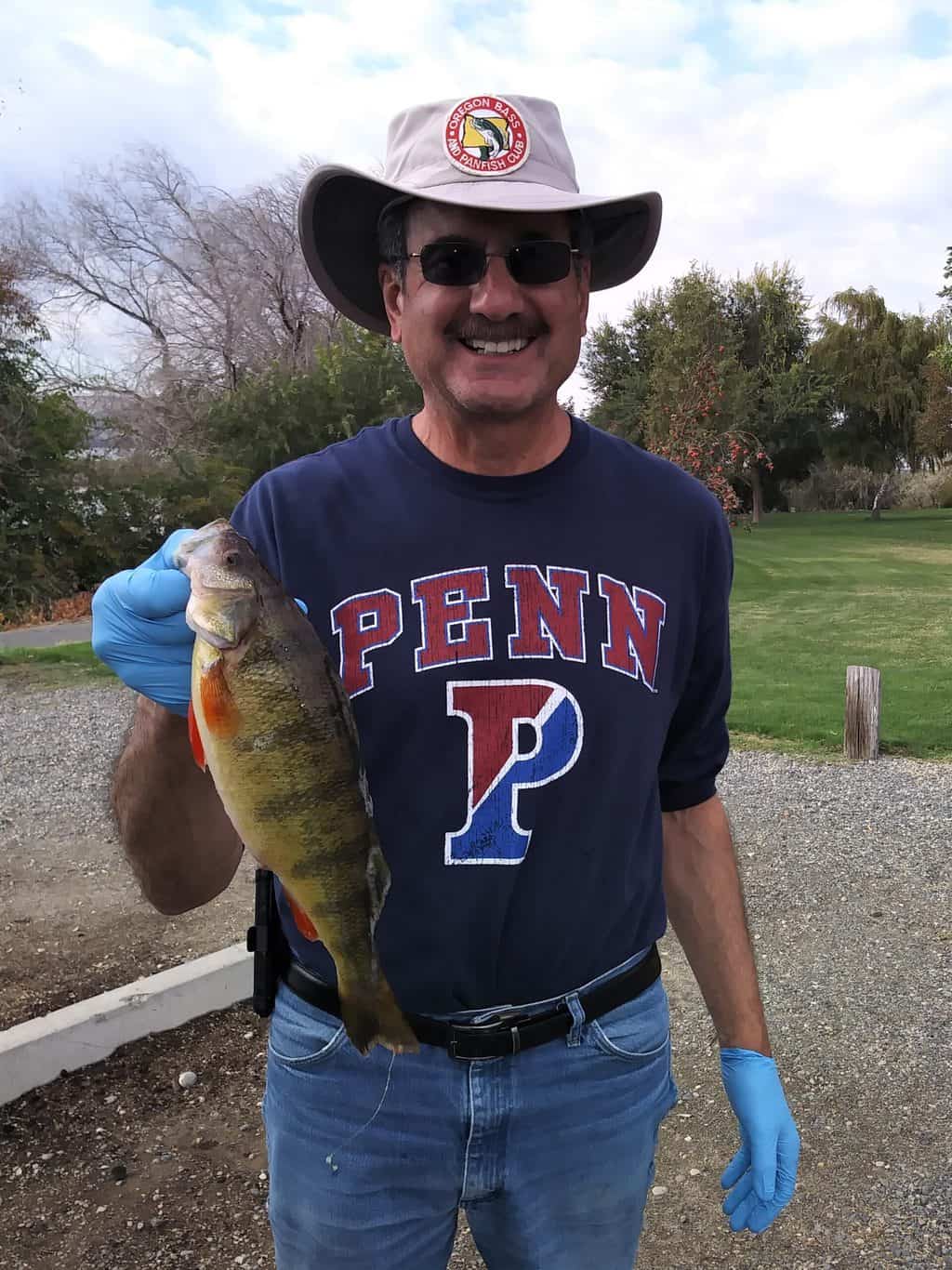Who doesn’t love perch?
Abundant, hard-fighting and quick to bite, these feisty little panfish are common throughout much of the northern United States and Canada, where they provide easy fishing for novice and experienced anglers alike.
Yellow perch are fun to catch, but they are also prized as some of the tastiest fish in fresh water. And because they congregate in such great schools throughout most of year, catching enough for a meal is seldom a challenge.
Yellow Perch Identification
Yellow perch are fairly easy to pick out of a lineup. They have an elongated body shape—think miniature walleye—with two dorsal fins separated into spiny and soft-rayed sections.
True to their name, yellow perch coloration ranges from pale yellow to rich yellow-gold, with seven dark vertical bars along each side.
Typical adult size of yellow perch is 6 to 10 inches. But perch measuring longer than 12 inches and weighing over a pound are not out of the question.
Perch often congregate in large schools of similar-sized individuals. So, if you’ve caught one, chances are there are more nearby.
How to Catch Perch
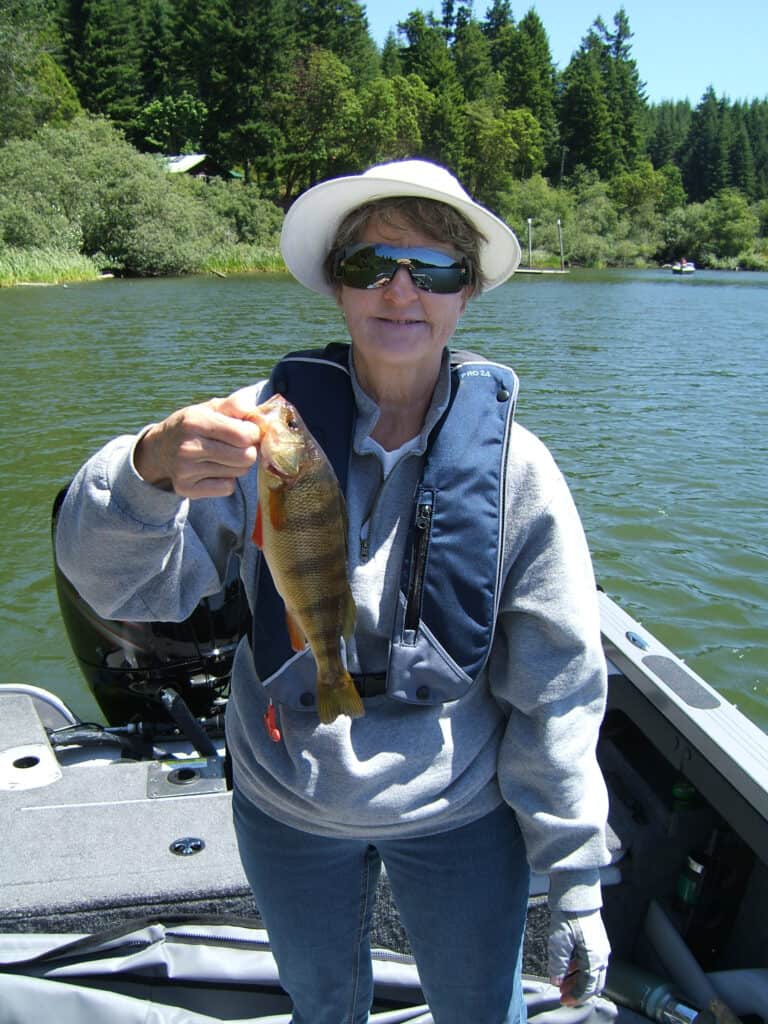
Yellow perch fishing is often fairly simple. Perch have a varied diet that includes insects, worms, crustaceans and all kinds of smaller fish.
When perch are actively feeding, they have a reputation for biting just about anything that will fit in their mouths.
You don’t generally need a lot of advanced tackle to catch perch. That being said, these fish do have their serious devotees, many of whom carefully hone their fishing tackle and techniques to catch more and bigger perch.
Bait Fishing for Perch
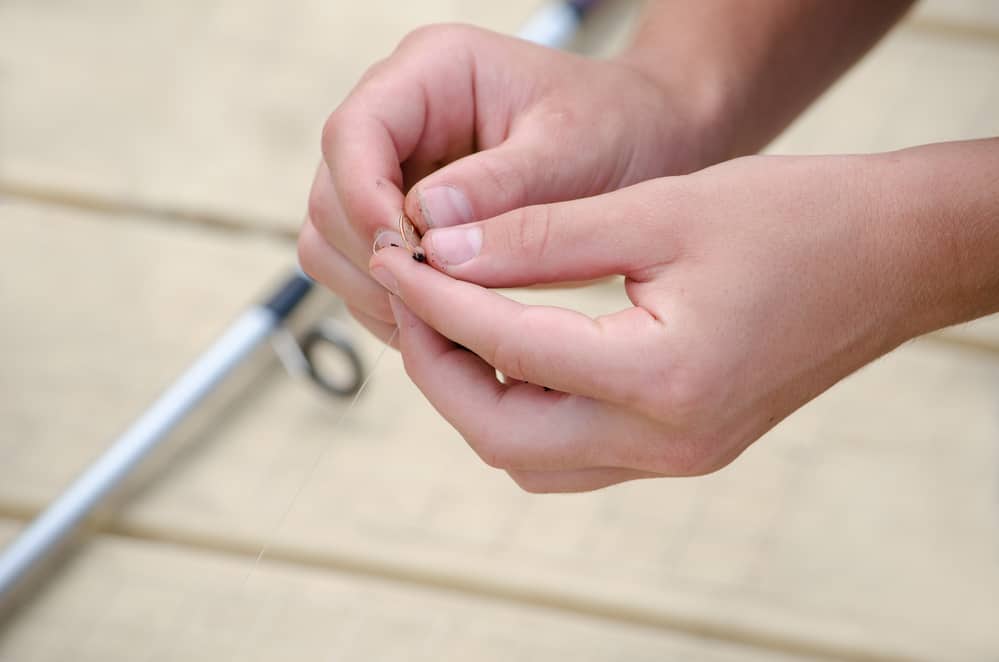
Live bait tends to be the most effective option for perch, and generally the simplest.
Countless perch have been tempted by nothing more than a piece of nightcrawler on a plain hook, and many children’s earliest fishing memories involve catching perch and sunfish in this fashion.
Some of the most effective live baits for yellow perch fishing include:
Worms
There’s no simpler or more effective bait to catch yellow perch than the classic earthworm.
Whole nightcrawlers tend to be a little big for perch, so it’s a good idea to break them up into smaller sections. You’ll miss fewer bites, and your bait will last longer.
Smaller worms, often called red worms, and garden worms can be used whole.
Minnows
Perch attack small minnows with enthusiasm, making them a great bait option wherever they are both available and legal.
Minnows ranging from 1 up to about 3 inches are just right for perch.
Larvae
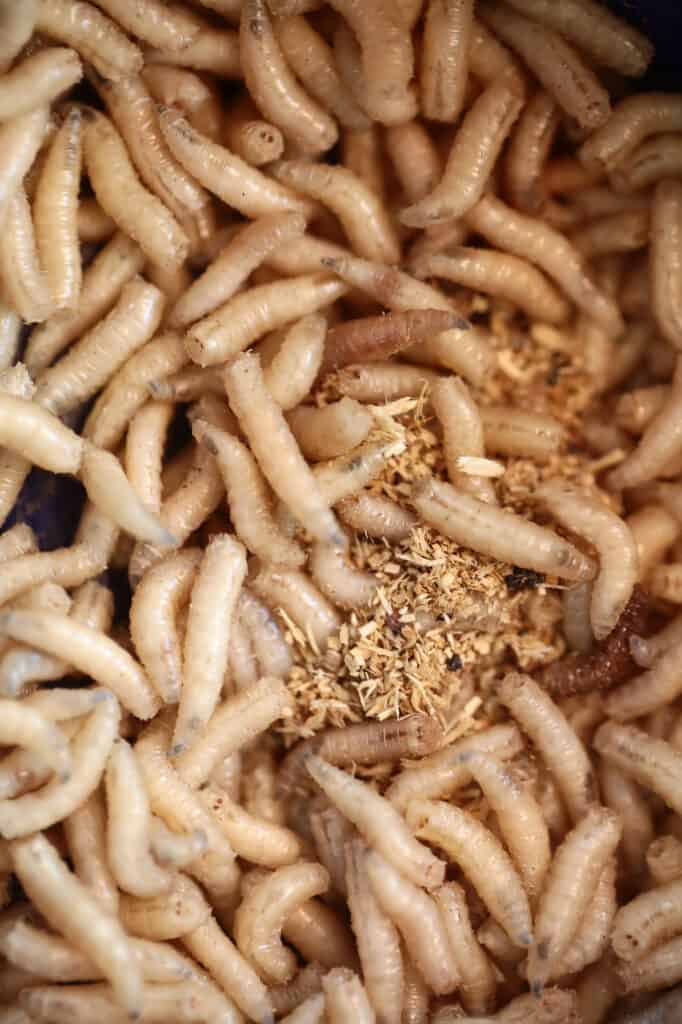
Larvae baits such as wax worms and maggots (sometimes called “spikes”) are most commonly added so a small jig head and used for ice fishing.
Crayfish
Larger perch will bite readily on crayfish. In lakes where perch share habitat with bass, perch are sometimes considered a nuisance because they steal crayfish intended as bass bait.
Where to Fish with Bait for Perch
Yellow perch hunt near the bottom more often than not, so it’s usually best to start by bait fishing on or near bottom, and then work your way up the water column.
Bait can be suspended under a bobber if fish are feeding closer to the surface.
Trolling—the practice of pulling bait behind a slow-moving boat to cover more water—is also popular for perch fishing.
Similarly, with the help of a little wind to help move your boat, drifting bait near the bottom also can be a great way to locate schools of perch.
Lots More Perch Fishing Baits
Believe it or not, there are literally dozens and dozens of great baits that will catch perch. Some are natural, some are a little surprising, and some are simply weird (but they work).
Even if you don’t happen to have any of the most common perch baits on hand, check out our Comprehensive Guide to the Best Bait for Perch Fishing. We’re betting you’ll find more than one option.
Lure and Jig Fishing for Perch
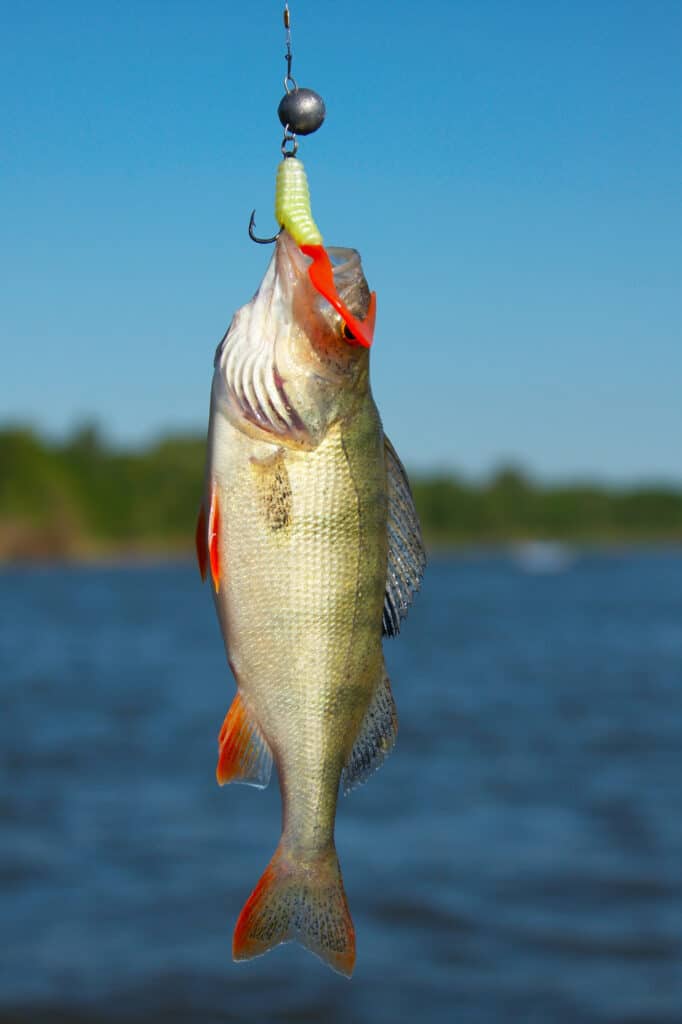
Fishing for yellow perch with lures and jigs tends to be a more active approach than bait fishing.
It many situations, it’s also an effective way to target larger yellow perch rather than small individuals.
A wide range of lures and jigs can be effective, and the key is often to use much smaller lures than one would typically use for bass or walleye.
A good rule of thumb is that if a lure is the right size for crappie fishing, it’s also good for perch.
Some of the most effective types of lures include:
Jigs
This is overwhelmingly the most widely used category of lures for yellow perch fishing. Most of the best perch jigs are 1 to 2 inches in length.
Soft plastic jigs are effective, versatile and inexpensive, with some of the more popular styles being tube jigs, curly-tail jigs and split-tail jigs.
Small hair jigs and marabou jigs (i.e. “crappie jigs”) are also excellent choices.
Crankbaits
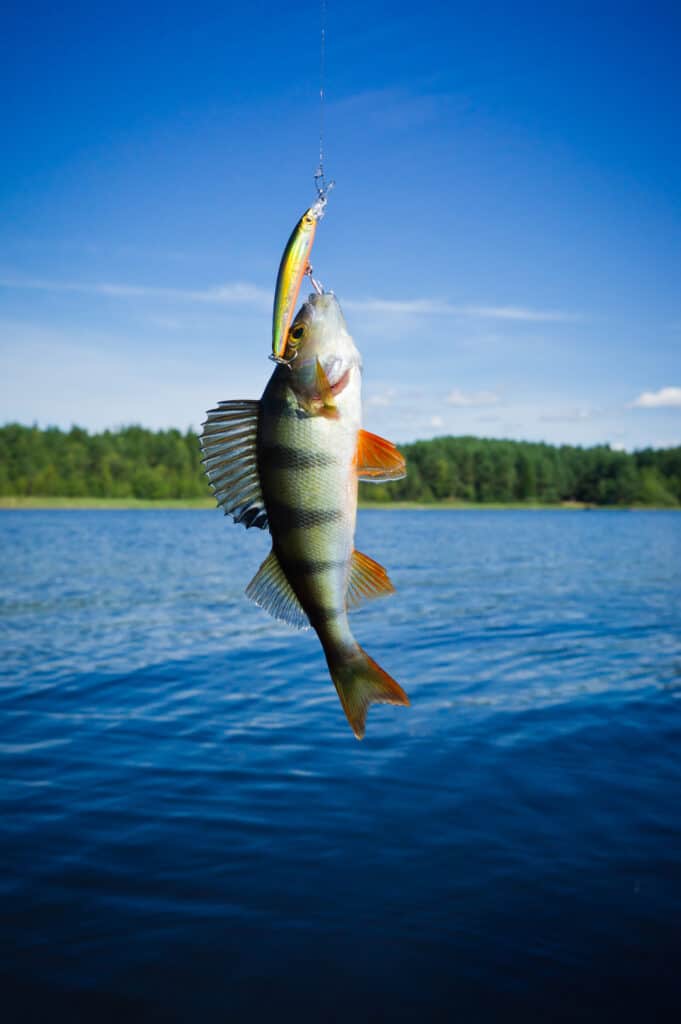
Although not always the first lures one reaches for when perch fishing, crankbaits can be highly effective, and are a good way to cover a lot of water quickly if you’re trying to locate fish.
The smallest crankbaits, often called “micro cranks” are usually the best.
Spinners
There are two basic types of spinners (spinnerbaits and in-line spinners) and both can tempt perch when they are feeding away from the bottom or in shallow water.
Spoons
Small spoons are highly effective at times, and jigging spoons are a favorite for deep-water fishing.
Lure color is also an important consideration.
Perch typically respond well to bright colors like white and chartreuse, but they may also bite more natural brown and green tones that imitate crayfish and other prey.
Metallic lures that create a lot of light and flash are affective too, especially in murkier water.
Perch Fishing Tackle
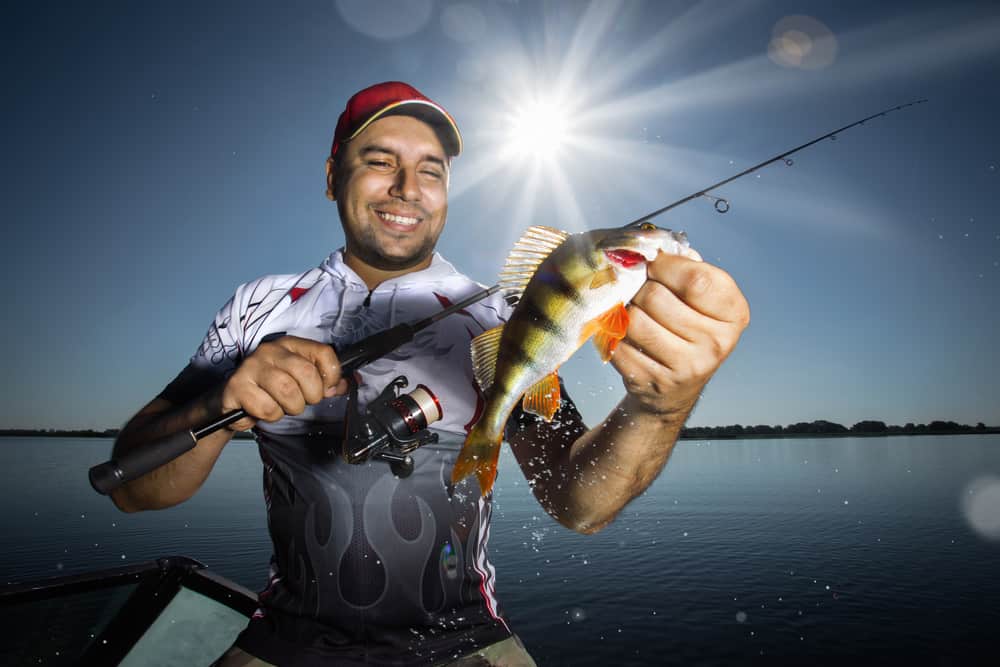
Rods and reels
While you likely can use a rod you already employ for panfish, bass or trout, a light graphite fishing rod with an open-faced spinning reel is just right for perch fishing.
Many anglers prefer a longer rod (over 6 feet) because it allows them to cast small baits farther; but the rod should be thin and lightweight with a flexible tip for feeling light bites.
Hooks
Bait hooks ranging from size 4 to 8 are ideal for most of the baits used for perch fishing. Some prefer hooks on the larger side because they are easier to remove and less likely to be swallowed.
Sinkers
An assortment of light split-shot and bell sinkers will make fishing near the bottom a lot easier.
Jigs heads
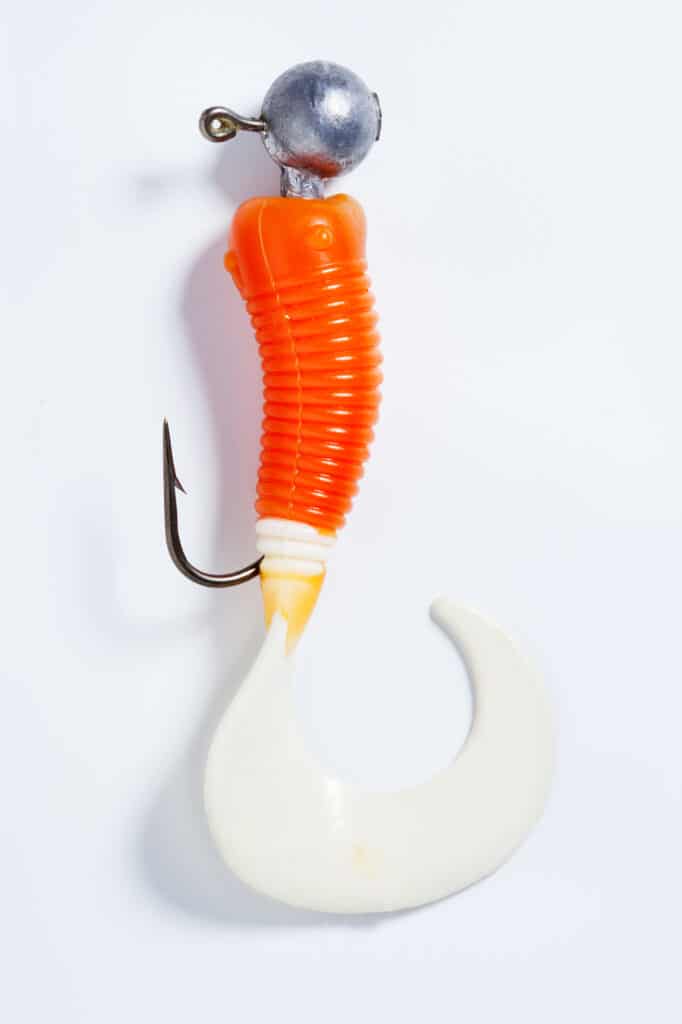
Round 1/16-ounce jig heads are just right for most perch jigs, though heavier (1/8-ounce) and lighter (1/32-ounce) jigs might be preferable in certain situations.
Having an assortment of jig heads on hand will allow you to switch among different soft plastic jigs quickly and easily to find what’s working.
Bobbers
A variety of bobbers or floats in varying sizes and shapes will prepare you for situations where you want to keep your bait off the bottom.
Although most commonly used with live bait, bobbers are also a good way to suspend a jig above the bottom.
Line
Six-pound monofilament line is ideal for most perch fishing situations, but 4- or 8-pound can be options if that’s what already is spooled on your reel.
Ice Fishing
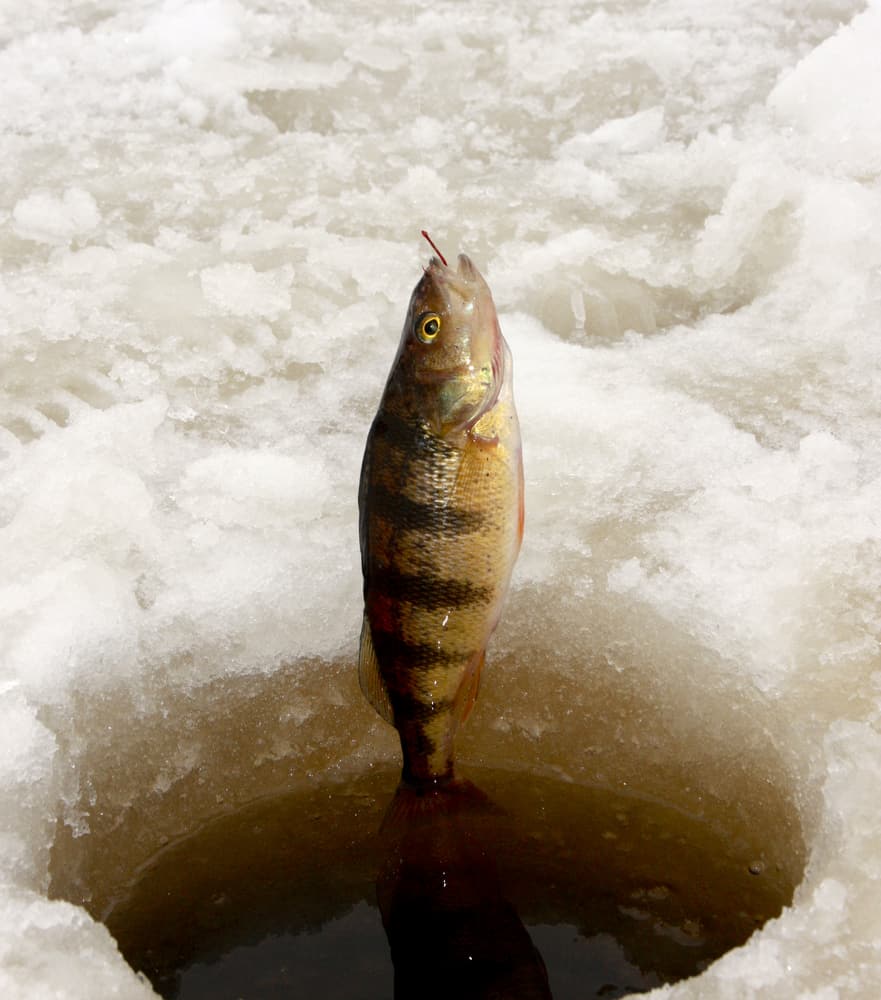
Yellow perch are among the most sought-after fish among ice fishermen, not only because perch are great table fare, but because their tendency to school together and bite in cold water makes it relatively easy to catch them in large numbers once you find them.
Ice fishing bait and tackle is typically scaled down compared to warm-season tackle.
Ultralight spinning rods spooled with 4-pound line are typical.
The best ice fishing baits for perch are similarly dainty. Tiny jigging spoons and teardrop jigs tipped with wax worms or spikes can almost always be counted on to get a bite.
Where to Catch Yellow Perch
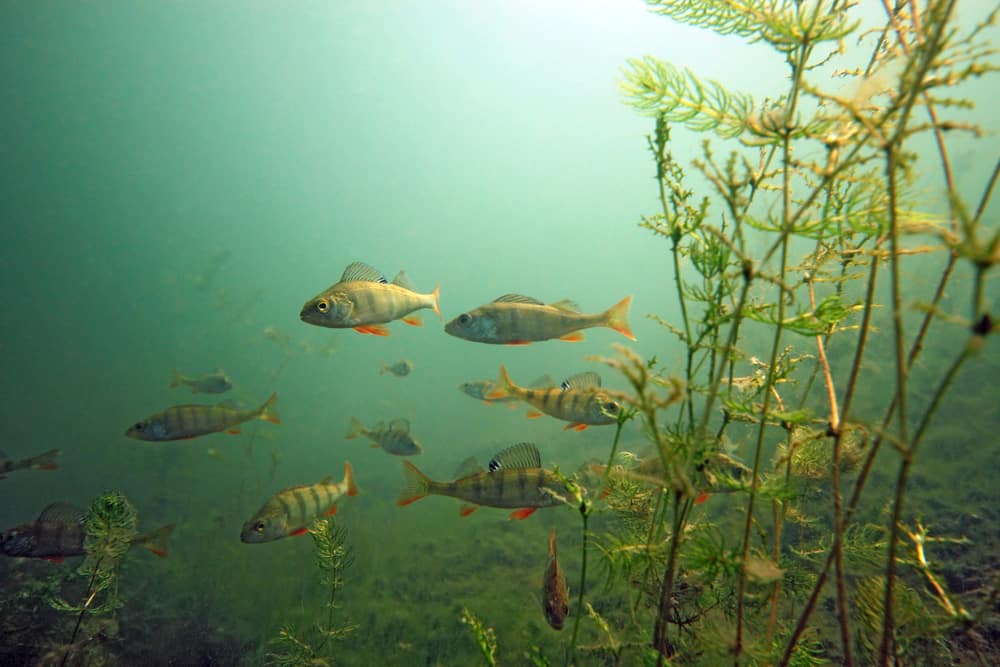
Yellow perch are native to the Midwest and Northeastern United States, as well as large portions of Canada. They are very abundant in the Great Lakes watershed.
Perch also have been widely transplanted to areas south and west of their native territory, including as far west as Washington and Oregon.
Lakes and Reservoirs
Yellow perch inhabit lakes and reservoirs of all sizes, but they tend to thrive and reach the greatest size in deep, clear bodies of water with a variety of habitat.
In small lakes and ponds, perch tend to rapidly overpopulate, leading to stunted growth.
In the lakes and reservoirs that perch call home, these fish can be found in a wide range of depths, often with the smallest fish staying closest to shore throughout most of the year.
The biggest perch in any given lake are more likely to be found in deep water, except in spring when they head toward the shallows to spawn.
Yellow perch often like areas with a mixture of rocks, gravel and aquatic vegetation, and they hunt near the bottom more often than not.
Drop-offs and shallow reefs surrounded by deeper water are great places to find perch.
Rivers
Perch don’t always thrive in rivers the way they do in lakes, but that doesn’t mean you can’t have a successful perch fishing trip on your local river or stream.
As a general rule, any river that supports a healthy walleye population can also harbor plenty of perch.
Large, slow-moving rivers are typically your best bet for perch, and major waterways like the Ohio and Upper Mississippi rivers are often great perch fisheries.
Transplanted perch are also common in rivers outside their native range, including in the Columbia River system in the Pacific Northwest.
Perch can inhabit smaller rivers and streams as well, especially slower-moving waters.
Yellow perch often gravitate toward deep holes and pools where the current isn’t as strong.
They tend to stick close to rocky cover in rivers much like they do in lakes, often hovering around drop-offs, but moving toward shallower areas to feed during warm weather.
When to Catch Perch
Perch offer year-round fishing opportunities, but their movements are seasonal. In many lakes, you may be able to catch more or larger perch by adjusting your tactics and techniques as the calendar changes.
Spring
Yellow perch head toward shallow water to spawn when waters reach 45 to 52 degrees.
Timing varies from as early as February to as late as June depending on location, but as a general rule perch start spawning just as walleye finish spawning in most waters.
Spring is one of the best times to go perch fishing, as the biggest perch gather in great numbers in shallow water.
Summer
Small perch can usually be caught in fairly shallow water year-round, but large adults head toward deeper water as spring turns to summer.
By June, rocky areas in 8 to 12 feet of water are prime targets. By August, you can expect to catch perch as deep as 25 to 35 feet.
Fall
Autumn is a transitional season for yellow perch, and while they usually continue to inhabit deep, rocky habitats, they will often be on the move as they actively look for food ahead of winter.
Winter
Fishing for yellow perch through the ice often requires some searching, but once you find fish, you’re likely to find a lot of them.
Mid-depth basins and flats are the best places to find perch under the ice in most lakes. Perch are more likely to suspend far from the bottom in winter than in other seasons.
Time of day
In addition to seasonal changes, be sure to take time of day into account as well.
Yellow perch feed most actively in the morning and evening, and these are often the best times of day to be on the water.
There is frequently a good late afternoon bite as well, especially in the cooler seasons and during overcast weather.

